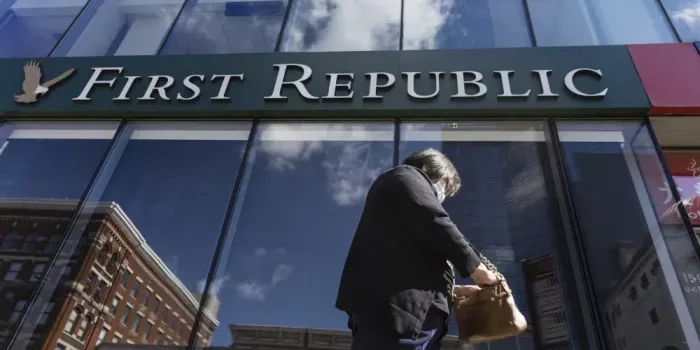(By Jon Miltimore, FEE) Federal regulators recently seized the struggling First Republic Bank on Monday, which they promptly sold to JPMorgan Chase. Reports show First Republic had some $230 billion in financial assets which quickly evaporated, making it the second largest bank collapse in US history, exceeding the recent bankruptcies of Silicon Valley Bank and Signature Bank.
You read that correctly—three of the four largest bank collapses in US history have occurred in the last 60 days. The events naturally have raised questions about the strength and durability of the US banking system. Confidence appeared weak. The KBW Regional Banking Index saw shares hit an annual low as investors fled from regional bank stocks.
That something is wrong in the US financial sector is apparent, but few agree on the source of the affliction. Some blame banks for going “woke”, while others point to Federal Reserve policies. Others call out the failure of regulators and bank auditors.
One possible cause for the financial reckoning has gone largely unnoticed, though it was buried in a Federal Reserve report.
While the conventional wisdom is that banks simply need to be regulated harder, a report from the Fed’s board of governors suggests banks are already struggling to navigate a labyrinth of federal rules and regulations. This was particularly true of SVB, which had experienced rapid growth in recent years, causing it to “move across categories of the Federal Reserve’s regulatory framework.”
That framework, the Fed dryly notes, “is quite complicated.” (Indeed.) And the report makes it clear that SVB was spending a lot of time and money on consultants trying to navigate this framework “to understand the rules and when they apply, including the implications of different evaluation criteria, historical and prospective transition periods, cliff effects, and complicated definitions.”
Ultimately, the Fed points the finger squarely at SVB in its postmortem, not government regulations.
“Silicon Valley Bank’s board of directors and management failed to manage their risks,” the report states. “Supervisors did not fully appreciate the extent of the vulnerabilities as Silicon Valley Bank grew in size and complexity.”
That SVB bears the most blame for its demise is true, as I’ve explained. But the Fed’s report sheds new light on why SVB wasn’t as focused on managing its risk as it should have been.
“It’s clear SVB found it challenging to deal with an overly complicated regulatory framework being pushed by the Fed, which included a new focus on climate change risk assessment and cultural issues, such as fairness and equity,” Stephen Dewwey, a retired federal financial regulator, tells me. “That is time and resources the bank could have spent analyzing interest rate risk and prudent management of its balance sheet.”
Although the Fed owns up to some of its own regulatory impotence during the collapse, it mostly passes the buck onto SVB. Worse, the central bank cites SVB’s collapse as a reason to give regulators more control over the financial system. This might sound ludicrous given the Fed’s recent failures, yet it’s precisely what we should expect.
“An iron law of the modern administrative state is that the solution to regulatory failure is always to give regulators more power,” the Wall Street Journal’s editorial page noted.
This phenomenon is what Austrian economist Ludwig von Mises described in his historic 1950 address “Middle-of-the-Road Policy Leads to Socialism.” Mises understood that not all countries adopt socialism through bloody revolutions. Some arrive there slowly, through a process he describes as “interventionism,” which is viewed as a middle way between “unbridled capitalism” and socialism.
The problem is, these interventions—price controls, labor standards, consumer protections, etc.—come with costs and often create market problems. When these problems arise, regulations rarely are lifted. On the contrary, the “free market” is often blamed, and more intervention is demanded.
“As a remedy for the undesirable effects of interventionism they ask for still more interventionism,” Mises observed. “They blame capitalism for the effects of the actions of governments which pursue an anti-capitalistic policy.”
This is precisely what is happening today with the banking crisis. Instead of blaming the government’s byzantine regulatory framework or the Fed’s monetary schemes—which no doubt are even more to blame—bureaucrats say they simply need more control.

